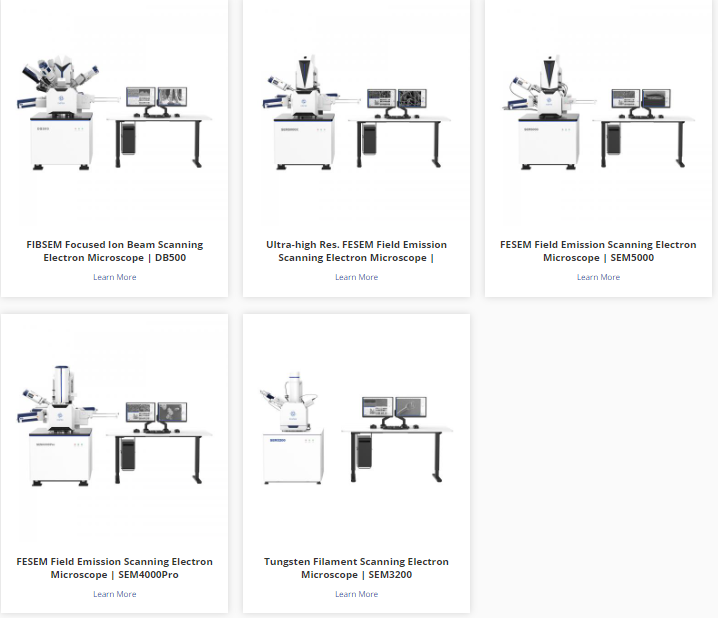This article was last revised in 190 Days ago, some of its contents may have changed. If you have any questions, you can ask the author。
Scanning electron microscopy (SEM) is a powerful technique for imaging and analyzing high-resolution nanoscale materials. Electron detectors are important components of the SEM, and they are responsible for capturing electrons and converting them into electrical signals. To obtain accurate and reliable results, it is crucial to choose the right electron detector. This article will discuss the key factors to consider when selecting an SEM electron detector.
Imaging Modes:
SEM detectors can operate in a variety of imaging modes, each with unique advantages. The most common imaging modes are secondary electron (SE) imaging and backscattered electron (BSE) imaging. SE imaging provides high-resolution surface information, while BSE imaging is well suited for compositional analysis due to its sensitivity to atomic number variations. Please consider the specific requirements of your study or analysis to determine the most appropriate imaging modality.
Detection Performance:
The sensitivity and signal-to-noise ratio (SNR) of an electronic detector are key factors in the quality of an SEM image. High-performance detectors should have low noise levels and be able to detect weak signals. In addition, a sensitive detector captures more signals and facilitates the examination of various types of samples. Evaluate the detection performance metrics of different detectors and select the one that meets your analytical needs.
Energy Range and Resolution:
The energy range and resolution of an electron detector determines its ability to recognize and differentiate between electrons of different energy levels. Higher energy resolution allows for accurate characterization of material properties and elemental composition. Consider the energy range required for a specific application, such as low-energy imaging or high-atomic number material analysis, and select a detector with the appropriate energy range and resolution.
Specimen Geometry and Specimen Conductivity:
The geometric design of the SEM sample chamber should also be considered when selecting an electron detector. Different detector designs can accommodate different sample geometries, such as large or irregular samples. In addition, the conductivity of the sample can affect the choice of detector type. Materials with poor conductivity may require a specially designed detector such as the Everhart-Thornley detector. Evaluate the compatibility of the detector with the sample type and geometry.
Environmental Factors:
SEM electron detectors operate under different experimental conditions. Some detectors operate in high vacuum conditions, while others are suitable for low vacuum or environmental SEM (ESEM) environments. Consider your specific experimental requirements, such as the need for a controlled gas environment or the ability to analyze samples with variable atmospheric conditions, and select a detector that is compatible with the desired operating conditions.
>>
Choosing the right SEM electron detector is critical to obtaining high-quality imaging and analysis results. When selecting a detector, factors such as imaging mode, detection performance, energy range and resolution, specimen geometry, specimen conductivity, and environmental compatibility should be considered. By carefully evaluating these factors, researchers and users can ensure that the selected SEM electron detector meets the specific needs of their experiments, resulting in more accurate and in-depth observations at the nanoscale.
CIQTEK's self-developed SEM offers a wide range of electron detectors, such as BSED, STEM, EDS, EDX, EBSD, In-lens, ETD, etc.
